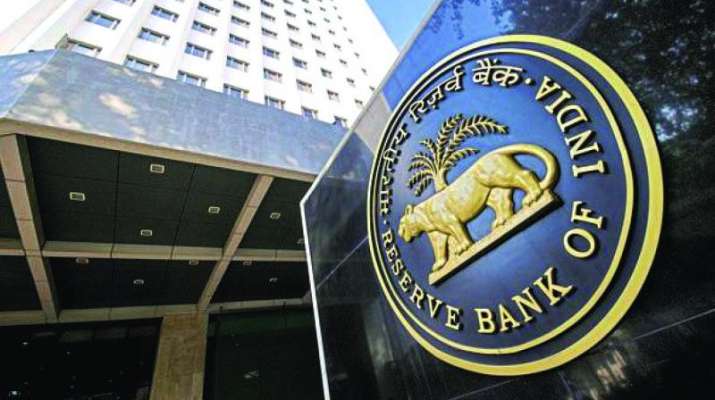RBI is the Reserve Bank of India. Liquidity Adjustment Facility, or LAF, was introduced by RBI in March 2009.
The concept of liquidity adjustment facility means that banks are allowed to borrow from RBI on a short-term basis—in some cases overnight, at a rate determined through auction—when they face difficulties in meeting their requirements for liquidity in the interbank market.

The Reserve Bank of India through its quarterly monetary policy statement released on 31 March, stipulated that all banks would be permitted to access the liquidity adjustment facility from 1 April 2009. Successive central bank governors have continued to operate the LAF framework and have allowed banks to borrow from RBI at a lower rate of 7.5% for 15 days per annum, for a total amount up to ₹8,000 crore. The facility is currently operational from 1 April 2009 and continues till 30 June 2009.
The LAF allows banks to borrow from the central bank, at a rate between 6.50% and 7.25%, for 15 days per annum, up to a ceiling of ₹8,000 crore per quarter. In absence of sufficient liquidity, the average yield on CRR (cash reserve ratio) bonds issued by RBI in the first fortnight of a calendar quarter are used as the rate for LAF. The rate was lowered to 6.5% from 7.0% by the central bank in June 2009.
This is a facility introduced by RBI to ensure that banks have an adequate amount of liquidity at any given point of time. Banks are facing difficulties in arranging short-term funds in the interbank market and hence turn to RBI for such funding.
Table of Contents
What Is a Liquidity Adjustment Facility?
Liquidity adjustment facility is a monetary policy tool introduced by Reserve Bank of India. The facility is available to banks. It is also known as LAF. It was introduced in 2009 by Reserve Bank of India.
A liquidity adjustment facility (LAF) is a facility that allows the central bank to conduct open market operations with commercial banks by offering them a medium-term cash credit. The central bank can issue short term paper to banks on borrowing from the central bank and vice versa. The central bank can either auction short term papers to the banks or the banks can borrow at a libor rate that is decided by Reserve bank of India. It is different from other facilities like repo and reverse repo that are available for immediate settlement.
LAF is basically a loan from RBI to commercial banks. Even though it is called a credit facility, it has no bearing on the net worth of the bank as it only involves interbank financial transactions. It is also not a tool to fight any liquidity crisis in the market. The banks outstandings with RBI, which is the proceeds of discounted bills, are used as loanable fund to circulate within the system under LAF
There is no given amount for which a bank can borrow under LAF. It forms part of the open market operations by RBI. Even though it forms part of the open market operations, it does not come in the way of other conventional tools like repo and reverse repo and cash management bills (CMB).
What Does it mean?
It means that the central bank has agreed to convert short term bonds into long term bonds in exchange for reserves held with the bank. This facility was also used as a part of Emergency Lending Facility. In general, RBI provides cash credit at a fixed rate of interest to banks. The rate of interest is determined by the bidding process.
On maturity, banks are required to pay back the amount. It is the same as repurchase facility given in auctions by RBI. The LAF helps in meeting liquidity shortages and assists in boosting liquidity management of the banks. It allows banks to borrow from RBI at a lower rate of 7.5% for 15 days per annum, for a total amount up to ₹8,000 crore. The LAF was introduced in 2009 by Reserve Bank of India. It is used to manage the liquidity in the banking system during an emergency, when the overnight call money market dries up.
When banks fund their operations through the call money market, they have to sell their excess cash balances with RBI. If there are no buyers of cash at the end of the day (for whatever reason), banks will not have any funds with RBI and hence, no money to fund their operations. The LAF is designed to help them deal with this situation by offering them overnight loans from RBI. It prevents non-banking activities because it is sanctioned under special conditions.
In addition to this, it also allows marginal borrowers in the market to get credit furthering the objective of financial inclusion.
The LAF is also a tool for banks to manage the liquidity in the market. The LAF is used to meet the liquidity shortage that would otherwise affect the overall market. It is also used to meet some unforeseen cash management needs of banks due to reasons like accidental change in assets and liabilities, call money window conversion and securitization.
Basics of a Liquidity Adjustment Facility
The setting up of a liquidity adjustment facility in India has been an interesting journey. The idea of a liquidity adjustment facility can be traced back to the early eighties when it was first proposed in the Annual Policy Statement for 1982–83.
Here is a brief history of LAF from its inception:
In March 2009, RBI introduced the LAF commenced a new ‘Liquidity Adjustment Facility’ (LAF) for managing liquidity and keeping overnight interest rates stable. This marks an important milestone in the Reserve Bank of India’s (RBI) specialised monetary policy framework, which was introduced in March 2007.
The LAF is essentially a facility to manage liquidity. It is intended to complement and support the liquidity management role of the central bank by providing banks with a degree of choice and making them more aware about what their costs would be for meeting their short-term funding requirements.
Liquidity Adjustment Facility and the Economy
The liquidity adjustment facility is a monetary policy tool introduced by Reserve Bank of India. The facility is available to banks. It is also known as LAF.

Let us take an example of a large bank that uses the LAF as a liquidity management tool. A large bank may have excess balances and it may have to sell them in the market. Banks, in general, borrow from RBI at a fixed rate of interest which are refinanced with short-term liabilities and then repurchased by RBI at maturity (in the auction). This is like a repo transaction with a reserve bank.
The LAF means that the central bank has agreed to convert short term bonds into long term bonds in exchange for reserves held with the bank. This facility was also used as a part of Emergency Lending Facility or ELF. In general, RBI provides cash credit at a fixed rate of interest to banks. The rate of interest is determined by the bidding process. On maturity, banks are required to pay back the amount.

